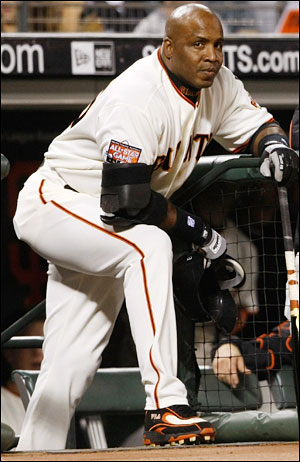Book Review: Sports Illustrated’s Great Baseball Writing
 I have wanted to read this book since it first came out in 2007. I’ve waited in anticipation for three years, and it was definitely worth the wait.
I have wanted to read this book since it first came out in 2007. I’ve waited in anticipation for three years, and it was definitely worth the wait.
After all, it is Sports Illustrated’s Great Baseball Writing. A volume of the best baseball writing from arguably North America’s best sports magazine between 1954 and 2004. Of course it’s going to be good.
“It’s a measure of the quality of this collection that the weakest piece in it is by Robert Frost;” says Michael Lewis of Moneyball fame in the book’s introduction. “It’s a measure of its honesty that the editors left out pieces by William Saroyan and Ted Williams in favour of better ones by writers you may never have heard of.”
The content really is fantastic. Leigh Montville writes about the last days of old Tiger Stadium in Detroit. The mystery of Billy Martin is tackled by Frank DeFord. Peter Gammons talks about the fans of Boston’s love and support of Bill Buckner after his disastrous misplay in Game 6 of the 1986 World Series.
On and on the book explores every corner of baseball, from famous names like Mickey Mantle and Stan Musial to the magic of a triple to a Japanese-American revolutionizing the way that the game is played in Hiroshima, a city devastated by the Second World War.
Of course, it’s still subject to the great Achilles’ Heel of its weekly magazine source: some of these articles get dated, and fast.
For example, right now, there is a recent Sports Illustrated – cover-dated May 17 - sitting on my coffee table with Shaquille O’Neal staring at the reader with the headline “Good old Shaq: Can He Deliver a Ring to the King?”. Pretty awkward when LeBron James, Shaq and the rest of the Cleveland Cavaliers were eliminated from the National Basketball Association playoffs on May 14.
That kind of automatic obsolescence is the nature of a weekly publication schedule, but it makes for some uncomfortable reading in a book that collects those articles years later.
Chapters like Steven Cannella’s “Against the Grain” (March 25, 2002) don’t hold up well as it explains the influence of the maple bat and how “the ball jumped off it with more zip”.
Maybe maple bats do help batters. Maybe Cannella was reporting on what he felt was a real factor in the power surge. I’m not sure. Unfortunately, the piece comes across as a ham-handed attempt at explaining the steroid-fuelled surge in home runs in the late 1990s and early 2000s.
Reading Tampa Bay Devil Rays catcher John Flaherty say that “People talk about the ball being juiced. I’ve been saying for a while now that the wood is so much better than it was when I came up,” makes me cringe because I can’t help but think that the ball and bat have nothing to do with the rise of the long ball.
Similarly, Tom Verducci’s “600 and Counting” (August 19, 2002) looks at the mysterious spike in Barry Bonds’ home run numbers. Verducci, one of the best writers in baseball, breaks Bonds’ career into three stages with the final level being explained away quickly:
“[I]n Stage 3 Bonds has crept closer to home plate, enabling him to pull pitches on the outside half of the plate with power rather than hitting line drives to the leftfield gap.”
Sure, Bonds probably did adjust his batting stance at different times in his career, but there’s also a lot of circumstantial evidence that suggests that he used performance enhancing drugs during that same period. The Steroid Era has left me so cynical that I can’t help but believe the latter over the former and that Verducci was naive.
Then again, that’s probably the point. After all, this is a book dedicated to the entirety of the baseball experience from 1954 to 2004. The ignorance of fans and sports journalists about steroids between the mid-1990s and mid-2000s is certainly a part of that history.
All in all, Sports Illustrated’s Great Baseball Writing is an excellent read. Just be prepared for some rather uncomfortable articles that seem ridiculous in light of the Mitchell Report and other investigations into steroid use in professional baseball. Some of the articles just do not hold up in the face of more cynical examination.
Archives
- February 2014 (1)
- June 2012 (1)
- January 2012 (1)
- December 2011 (1)
- November 2011 (2)
- June 2011 (3)
- April 2011 (2)
- March 2011 (2)
- February 2011 (5)
- January 2011 (5)
- December 2010 (3)
- November 2010 (11)
- October 2010 (11)
- September 2010 (7)
- August 2010 (10)
- July 2010 (10)
- June 2010 (5)
- May 2010 (14)
- April 2010 (18)
- March 2010 (24)
- February 2010 (22)
- January 2010 (20)
Categories
- Books (18)
- Comics (15)
- Food (2)
- Movies (3)
- Music (2)
- Personal (4)
- Reading (22)
- Site administration (7)
- Sports (143)
- Television (2)
- Video Games (2)
- Writing (23)
